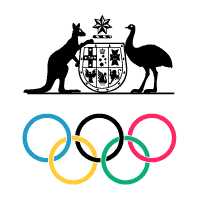
Changes to DanceSport Age Groups for 2016
There will be two important changes that will occur on the 1st January 2016 that affect how competitors are separated into their Age Groups.
The first of these was published last year at this time (in Focus), that being the use of a person’s birth year for determining the Age Group at which competitors in the Amateur Division participate. The Recreational Division has been operating using this system from its conception providing valuable insight into this style of management. Those of you who have competed overseas know that international bodies already use the year of birth for determining Age Groups.
There is a mistaken belief that this change is to align our system with overseas groups such as the WDC and WDSF and whilst they do use this system for allocating Age Groups (and this may assist our competitors when they travel) it is not the basis for the change here. The drive for this change has come from the Department of Sports and Recreation who provide our DanceSport State Bodies with funding.
This method is standard practice in Australian Schools for determining sporting groups and provides consistency for parents that a child that commences in an Age Group at the start of a year will be eligible for that group until the end of that particular year. There can be no argument that the Australian DanceSport ‘season’ is based on the calendar year therefore the Australian Education standard and DanceSport will align perfectly.
Having said all the above I would like to add that there is no perfect system, a simple fact is that children grow at astoundingly different rates. There will always be the 12 year old child that looks way too mature for Juvenile, conversely there will be Youth competitors that look as if they belong in Junior, this will always be present.
However ... the adoption of this change in the Amateur Division it will make it easier for parents and competitors in Juvenile, Junior and Youth levels in that each competitor will eligible in that age for the entire year. Costuming requirements will be for the entire year, specifically when moving from Juvenile to Junior. Importantly any preparation required, costume or choreography, will occur on the first of January of any given year giving ample time for parents and children.
Also with the alignment of the Amateur and Recreational Age Groups there will be consistency for competitors when they move from the Recreational Division to the Amateur Division.
The Age Groups for 2016 (Recreational and Amateur) will be as follows:
| Age Group | Year of Birth |
| Juvenile (12 & under) | 2004 or later |
| Junior (13 to under 16) | 2001 to 2003 |
| Youth/U21 (16 to under 21) | 1996 to 2000 |
| Adult (21 to under 35) | 1982 to 1995 |
| Masters I (35 to under 50) | 1967 to 1981 |
| Masters II (50 to under 60) | 1957 to 1966 |
| Masters III (over 60) | 1956 & earlier |
An important point to remember is that the Age Group you are is personal, for example a child born in 2004 is a Juvenile but if she/he dances with a partner born in say, 2002, then they compete as a Junior couple. This does not make the child a Junior and if the partnership was to cease she/he could find a Juvenile partner and dance in the Juvenile Age Group.
The second change concerns our Masters competitors in which one partner may now be up to 5 years younger than the threshold of a particular Age Group.
Over the last couple of years, numerous discussions with competitors, coaches and adjudicators have taken place regarding the development of the Masters Age Groups both here and internationally. Fundamentally we have seen a shift in numbers from the dominate Masters 1 Age Group to the Masters 2 Age Group thus depleting the Masters 1 competition fields. Unfortunately very few new competitors are joining the Masters 1 Age Group to replace those dancing in the higher Age Groups.
As a result of these concerns, the following improvements have been made to the Masters Age Divisions.
A couple competing in Masters I, II or III may consist of one partner being five years younger than the published Age Group, provided that the other partner is within the competitive Age Group.
For example: A masters 1 couple could consist of one partner being 38, whilst the other could now be 32.
This now provides a far greater capacity for new partnerships to be created across all the Masters age divisions and allows world Representatives in the Masters 1 Age Group to be on an equal standing (at least age wise) to their European competitors.
Dallas Williams
President DanceSport Australia




